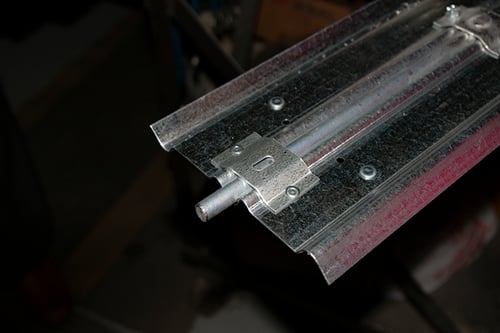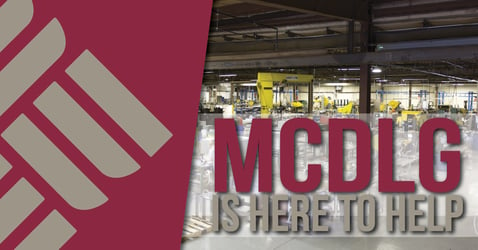In this Condenser article, we discuss extension accessories for damper blade axles. Learn the difference between an extended shaft kit and an integral extendable shaft.
The Driving Axle, The Linkage, and The Blades
Adjustable blades rotate along an axle at the center of the blade, commonly known as the blade shaft. Dampers will have a primary blade shaft, called the driving axle, which synchronizes the rotation of all the damper's blades. The driving axle is tied to the other blade shafts via the damper’s linkage. When an actuator rotates the driving axle, the linkage transfers this rotation to the other blades. In this way, the actuator can open or close the damper by rotating the one driving axle.
The driving axle can be extended past the damper’s frame in two ways: an extended shaft or an extendable shaft. What is the difference between these two options?
Extended Shafts - The Add-on Kit
The extended shaft is an extension piece affixed to the damper’s driving axle. Extended shafts will typically sit over the damper's driving axle like a cap, extending the shaft past the damper's frame. This option will be installed on the damper’s jamb in the factory. It can also come as a kit to be installed in the field.

This is an extended shaft. This piece fits over the damper's driving axle and extends it past the damper's frame.
The extended shaft must be modified manually to a smaller size. If you need more space in the installation area, then you will need to cut the excess length off the extended shaft. Once alterations are complete, this accessory can be connected to an actuator for automated blade movement. From there, it acts the same as the damper's driving axle by synchronizing rotation between all blades.
Extendable Shaft - The Integrated Approach
The extendable shaft is an integral extension: it is built into the core of the damper’s driving blade during the manufacturing process. This option is installed by the factory, since it is part of the blade, and will come pre-assembled with the damper. The driving blade will have a special seating bracket at its core to allow the axle to slide in and out of the blade body. In this way, an operator can adjust the extension as needed.
Extendable shafts can extend, or contract based on your sizing needs. You can easily adjust this shaft to the right size during installation, then lock the shaft in place. From there, you have a driving axle that extends past the damper’s frame.

Extendable shafts are built into the damper's blade. You can easily adjust the shaft to the right length.
Why would you need an extension? Extended shafts and extendable shafts can be used to connect multiple damper panels together. Connected dampers can be synchronized to move on the same blade action. In other words, all connected dampers will move together. You can save money by controlling two or three dampers with one actuator.
Always consult the manufacturer for torque requirements when utilizing multiple dampers.
For more on dampers and their components, check out these Newsstand articles:
- The Condenser - A Closer Look at Pin-Lock Shafts
- The Condenser - Product Spotlight: The 517-518 Series
- Connecting Dampers and Multi-panel Assemblies
Can you think of an application that requires using extended shafts? If given the options, would you choose extended shaft kits or an extendable shaft? Tell us what you think in the Comments section. MCDLG wants to know!
MCDLG is Here to Help!
Need some help? Maybe you have a specific question about a current job? Or do you need a head start on your next project? Talk to MCDLG! We can bring our 50+ years of experience to the table. We are here to help you.
From continuing education to equipment considerations, all the way to providing top-quality finished products, and to post-sales support. We assist our customers every step of the way. Interested? Read our article on all the ways we can help you: MCDLG is Here to Help!
Need help right away? Contact MCDLG today. We are ready to help you.
.webp?width=91&height=70&name=MCDLG%20Logo%20(Resize).webp)







